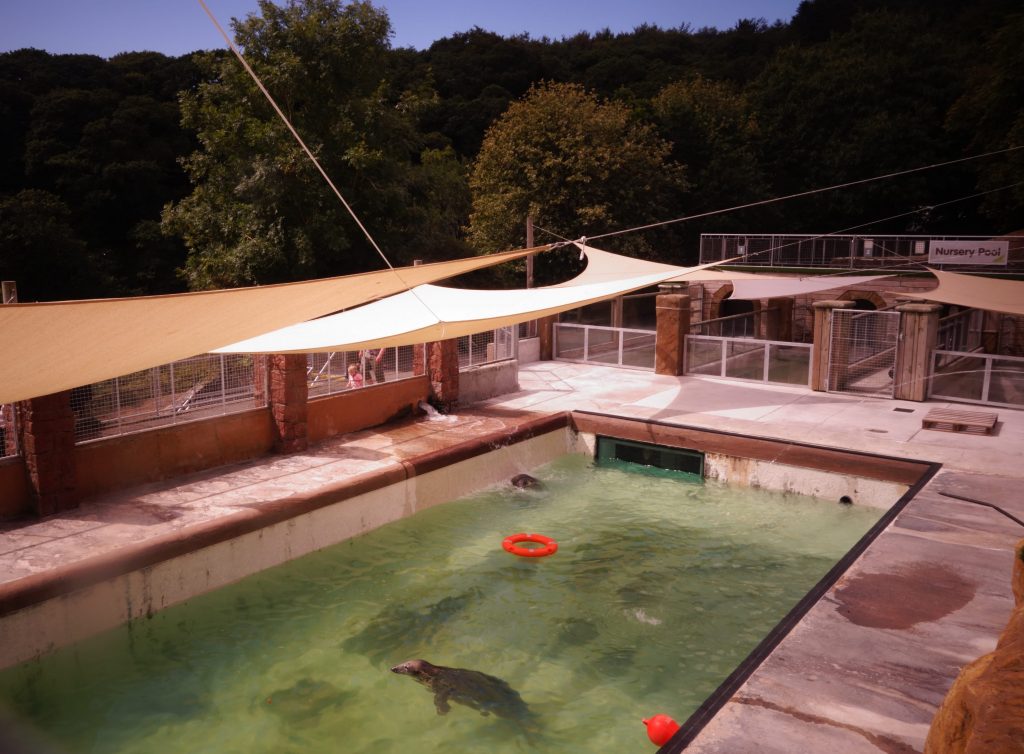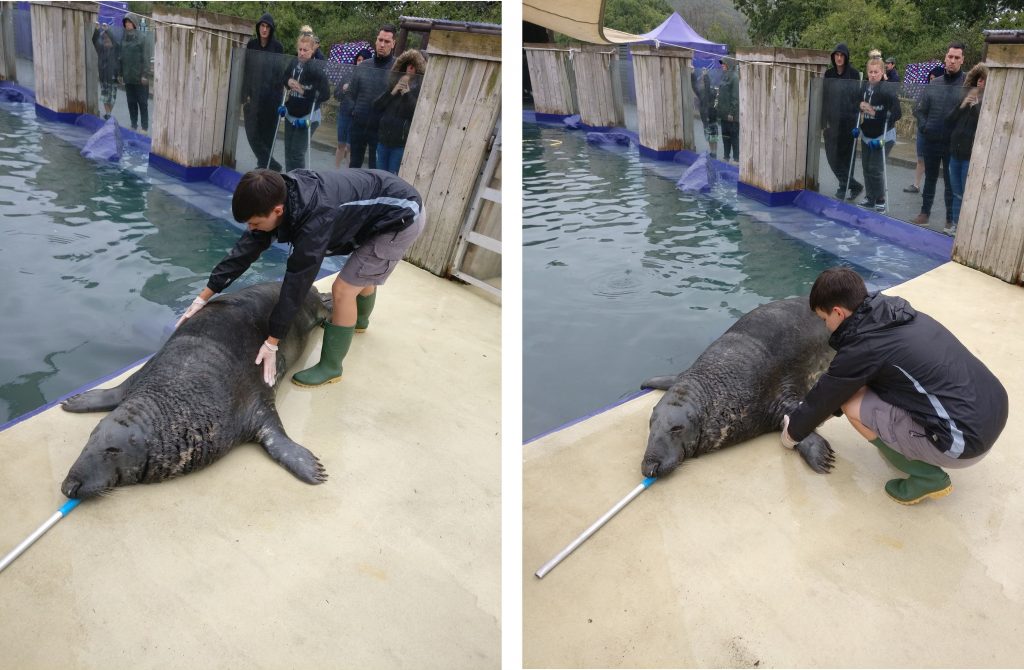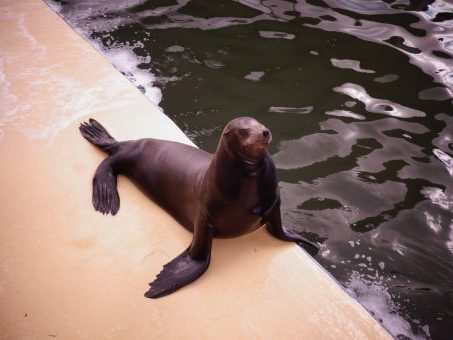NHBS’ core purpose is to support conservation. To this end, all NHBS staff members can apply for up to three days of paid time during each calendar year to spend on practical conservation projects of their choice. This month, customer services advisor Alice Mosley spent some time working at the Cornish Seal Sanctuary. Read all about her experiences below:

“Earlier this month I had the pleasure of volunteering at the Cornish Seal Sanctuary in Gweek as part of NHBS’ conservation volunteering scheme. As well as seal rescue and rehabilitation, the sanctuary has a huge focus on education of marine pollution, sustainability and how everyone can contribute to cleaning up our oceans.
The sanctuary at Gweek opened in 1975; the founders, Ken and Mary Jones had already been rescuing injured and abandoned seal pups at St Agnes for 17 years and needed a bigger site. It is nestled on the bank of the Helford River, at the entrance to the Lizard Peninsula, a Cornwall Area of Outstanding Natural Beauty (AONB). Now owned by the charity The Sea Life Trust, the sanctuary focuses on the rescue and rehabilitation of seals from all over the UK. On average, 60-70 pups are rescued each winter but the last year saw over 80 successful rescues. It costs around £2000 to rehabilitate each seal pup, so you know exactly where your donations are going!

The sanctuary has a fantastic rehabilitation success rate of around 98%, but some animal’s ongoing health problems or individual circumstances mean that they can never be re-released. This means that there are a number of resident seals that require care all year round. The sanctuary has also become a home for other animals and birds which have needed moving or re-homing for various reasons; it is home to nine Humboldt Penguins (conservation status: Vulnerable), four sea lions and two Asian short clawed otters (also classified as Vulnerable).
As a member of the animal care team for two weeks, most of the work I undertook was daily husbandry tasks for the animals, such as cleaning, food prep, feeding and enrichment. I was also introduced to the husbandry training that most of the resident animals undergo, which allows staff to look in the animals’ mouths, ask them to lift a flipper or tail for physical health checks, or voluntarily enter their transport cages. All training the resident animals undergo is beneficial to their overall health, while also keeping their mind active. This was particularly interesting to me as I will soon be studying both captive and wild animal behavior at University.

While it was the wrong season for rescue and rehabilitation (pup season is September to March), I learned a great deal about working in the field of animal care while at the sanctuary. I was impressed by the dedication of all the staff, and the obvious happiness and wellbeing of the resident animals. If you are in the area, or need any more reasons to visit the stunning rugged coastlines of Cornwall, I’d highly recommend a visit to the Cornish Seal Sanctuary”.
The Cornish Seal Sanctuary is located in Gweek Village in Cornwall (TR12 6UG). It is open 7 days a week (except Christmas Day) from 10am – 5pm (last admissions 4pm).

